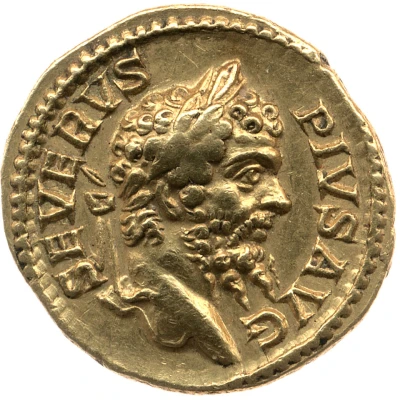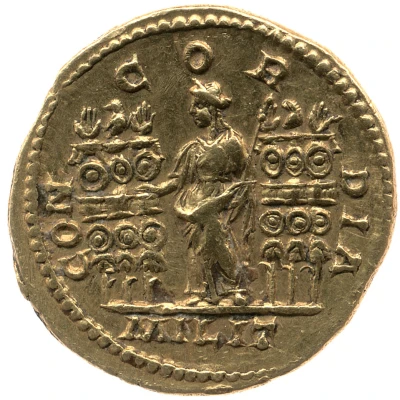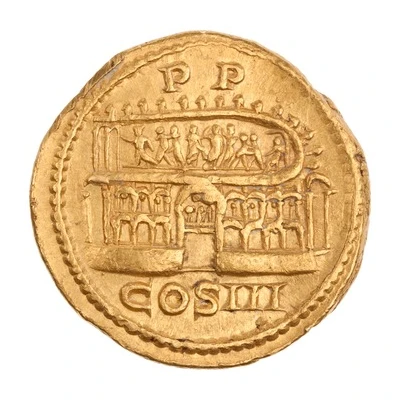Aureus - Septimius Severus COS III LVDOS SAECVL FEC; Bacchus, Liber, and Hercules
| Gold | - | - |
| Issuer | Rome › Roman Empire (27 BC - 395 AD) |
|---|---|
| Emperor | Septimius Severus (Lucius Septimius Severus) (193-211) |
| Type | Standard circulation coin |
| Years | 202-210 |
| Value | 1 Aureus = 25 Denarii |
| Currency | Denarius, Reform of Augustus (27 BC – AD 215) |
| Composition | Gold |
| Shape | Round (irregular) |
| Technique | Hammered |
| Demonetized | Yes |
| Updated | 2024-10-05 |
| Numista | N#269397 |
|---|---|
| Rarity index | 100% |
Reverse
Bacchus (Liber), wreathed, naked, on left, standing right, emptying oenochoe in right hand over panther, and holding thyrsus in left hand, and Hercules, naked, on right, standing left, holding club set on ground in right hand and lion-skin over left arm.
Script: Latin
Lettering: COS III LVDOS SAECVL FEC
Translation:
Consul Tertium, Ludos Saeculares Fecit.
Consul for the third time, organiser of the Secular Games.
Comment
Source:Online Coins of the Roman Empire (OCRE)
Interesting fact
The Aureus coin featuring Septimius Severus (COS III LVDOS SAECVL FEC; Bacchus, Liber, and Hercules) is an interesting piece of history because it showcases the Roman Empire's use of propaganda through currency. The coin's design features images of Bacchus, Liber, and Hercules, which were meant to promote the idea of the emperor's divine right to rule and his association with the gods. Additionally, the coin's inscription, "LVDOS SAECVL FEC," translates to "Leader of the Senate, Guardian of the Constitution, and Founder of the Empire," highlighting Severus's role as a powerful and influential leader. This coin is a prime example of how currency was used as a tool for political propaganda in ancient Rome.



